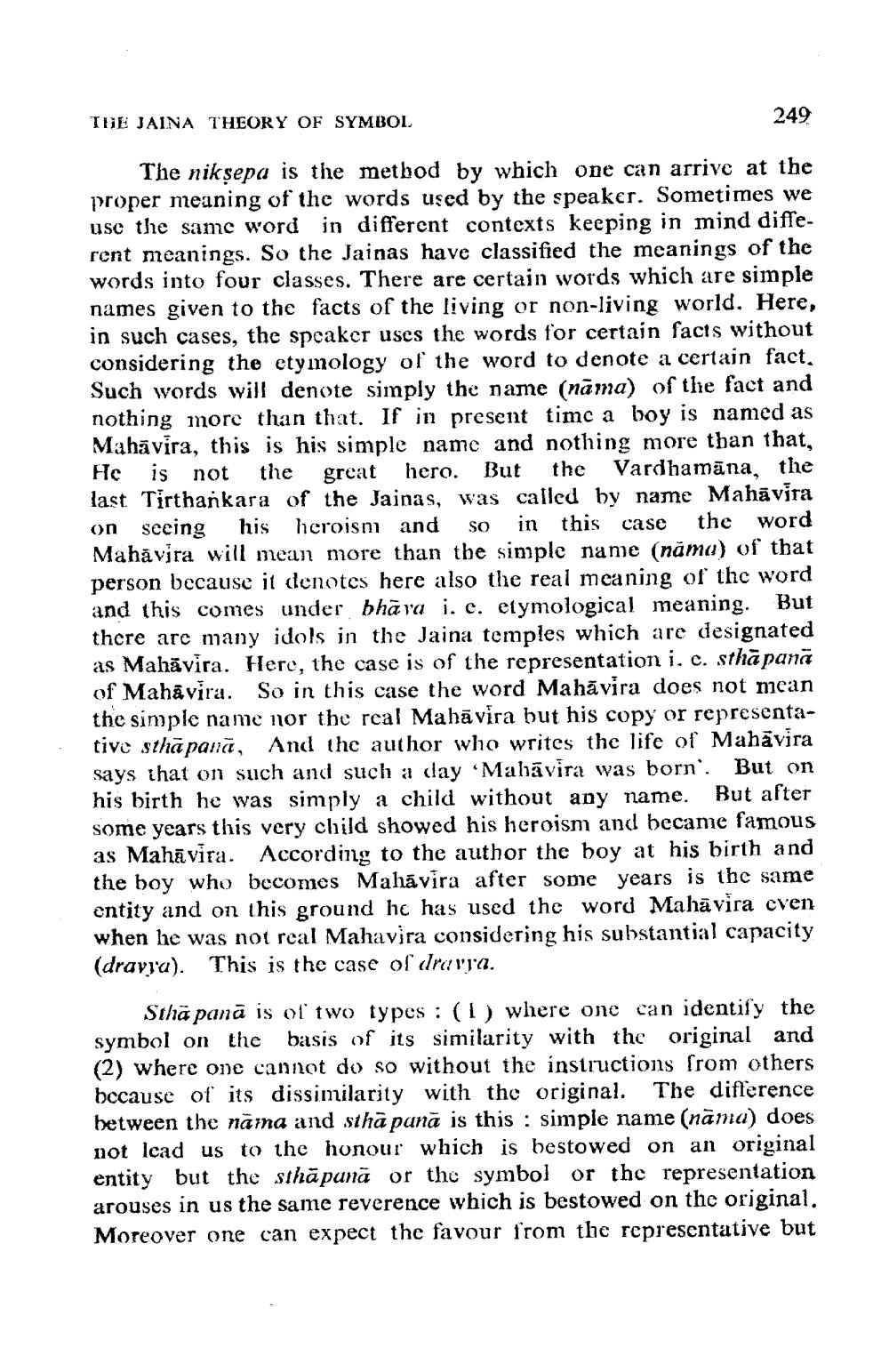________________
TUE JAINA THEORY OF SYMBOL
249
The niksepa is the method by which one can arrive at the proper meaning of the words used by the speaker. Sometimes we use the same word in different contexts keeping in mind different meanings. So the Jainas have classified the meanings of the words into four classes. There are certain words which are simple names given to the facts of the living or non-living world. Here, in such cases, the speaker uses the words for certain facts without
nsidering the etymology of the word to denote a certain fact, Such words will denote simply the name (nāma) of the fact and nothing more than that. If in present time a boy is named as Mahāvira, this is his simple name and nothing more than that, He is not the great hero. But the Vardhamāna, the last Tirthankara of the Jainas, was called by name Mahāvira on seeing his heroism and so in this case the word Mahavira will mean more than the simple nane (nama) of that person because it denotes here also the real meaning of the word and this comes under bhāra i. c. etymological meaning. But there are many idols in the Jaina temples which are designated as Mahāvira. Here, the case is of the representation i. c. sthapana of Mahāvira. So in this case the word Mahavira does not mean the simple name nor the real Mahā vira but his copy or representative sthapanā, And the author who writes the life of Mahāvira says that on such and such a day Mahavira was born'. But on his birth he was simply a child without any name. But after some years this very child showed his heroism and became famous as Mahāvira. According to the author the boy at his birth and the boy who becomes Mahavira after some years is the same entity and on this ground hc has used the word Mahā vira even when he was not real Mahavira considering his substantial capacity (dravia). This is the case of draria.
Stha panā is of two types : (1) where one can identify the symbol on the basis of its similarity with the original and (2) where one cannot do so without the instructions from others because of its dissimilarity with the original. The difference between the name and sthā panā is this : simple name (nāma) does not lead us to the honour which is bestowed on an original entity but the sthā panā or the symbol or the representation arouses in us the same reverence which is bestowed on the original. Moreover one can expect the favour from the representative but




